Your personal Tumblr journey starts here
History - Blog Posts


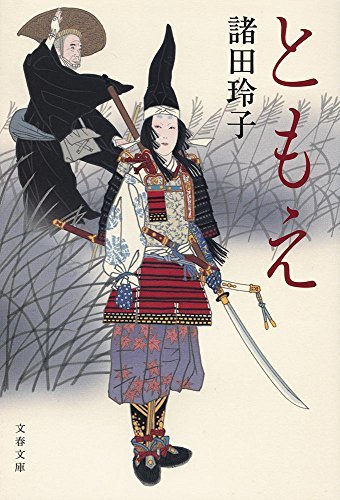



Sean bienvenidos, japonistasarqueológicos a una nueva entrega en esta ocasión hablaremos de Tomoe Gozen una vez dicho esto pónganse cómodos que empezamos. - Tomoe Gozen en hiragana (ともえごぜん) pertenece a Onna-bugeisha (女武芸者) mujeres luchadoras en japonés se conoce más como Ba Yuqian, al hablar de samurais se nos viene imágenes de hombres, las mujeres también tuvieron un gran papel y Tomoe Gozen fue una mujer que participó en el conflicto Genpei 1180-1192, su existencia está un tanto discutida. - Kiso Yoshinaka es muy hábil en las artes marciales y es bueno en el uso de arcos y flechas, os pondré una foto de la Estatua de Kiso Yoshinaka y Bagomae en la prefectura de Nagano. Fue una gran estratega, ya que cuenta la leyenda que en la Batalla del paso de Kuligara uso toros de fuego. - El Cantar de Heike: Son los poemas clásicos más importantes de la historia y la literatura japonesa, en el cual hablan de un sinfín de personajes y leyendas de la época. Fue escrito a principios del siglo XIII. - Espero que os haya gustado, os deseo una feliz semana y nos vemos en próximas publicaciones. 考古学ジャポニストの皆さん、新しい連載へようこそ。今回は巴御前についてお話します。そうは言っても、気を楽にしてから始めましょう。 - ひらがなで「ともえごぜん」は女武芸者に属し、日本語では巴玉銭として知られる女性戦士です。武士といえば男性のイメージが思い浮かびますが、女性も大きな役割を果たしました。 1180年から1192年にかけて源平合戦に参加した女性ですが、その存在については若干の議論があります。 - 木曽義仲は武芸に優れ、弓矢の扱いにも長けており、長野県にある木曽義仲像と馬籠前の写真を載せておきます。 クリガラ峠の戦いでは火の雄牛を使用したという伝説があるため、彼女は優れた戦略家でした。 - 平家の歌: 平家の歌は、日本の歴史と文学において最も重要な古典詩であり、その中で当時の無数の登場人物や伝説について語られています。 13世紀初頭に書かれました。 - 気に入っていただけたなら幸いです。楽しい一週間をお過ごしください。また今後の出版物でお会いしましょう。 Welcome, Archaeological Japonists to a new installment, this time we will talk about Tomoe Gozen, having said that, make yourself comfortable and let's start. - Tomoe Gozen in hiragana (ともえごぜん) belongs to Onna-bugeisha (女武芸者) female fighters in Japanese is better known as Ba Yuqian, when talking about samurai images of men come to mind, women also had a great role and Tomoe Gozen was a woman who participated in the Genpei conflict 1180-1192, her existence is somewhat disputed. - Kiso Yoshinaka is very skilled in martial arts and is good at using bows and arrows, I will put you a photo of Kiso Yoshinaka Statue and Bagomae in Nagano Prefecture. She was a great strategist, since she tells the legend that in the Battle of Kuligara Pass she used bulls of fire. - The Song of Heike: They are the most important classical poems in Japanese history and literature, in which they speak of an endless number of characters and legends of the time. It was written at the beginning of the 13th century. - I hope you liked it, I wish you a happy week and see you in future publications.






Sean bienvenidos, japonistasarqueológicos a una nueva entrega, en esta ocasión hablaré sobre Obon el festival de los difuntos una vez dicho esto pónganse cómodos que empezamos. - En Japón, en los días de agosto, del 13 al 16, se celebra el Obon, que lo podemos ver en multitud de animes, películas y doramas ya hice mención sobre que estas cosas no solo hay que verlas, como meros dibujos, ya que tienen mucho sentido cultural e histórico. Esta festividad tiene muchos elementos muy característicos como el Gozan no Okuribi también llamado Daimonji, muy característico de finales de estas fiestas, porque suelen ser una serie de dibujos alguno de un torii y otros como el kanji de fuego, por mencionar algunos ejemplos. - Los pepinos(se utiliza para cuando el difunto llega) y berenjenas(caso contrario cuando el difunto se va ) simbolizan la llegada y el regreso del difunto al más allá. Hay muchos países que celebran esta festividad de formas distintas, pero todos tienen en común que honran a sus antepasados, es una festividad que tiene 400 a 500 años de antigüedad y es de origen budista. Para finalizar la publicación mencionaremos el Awa-Odori, (Odori significa bailar) y data del siglo XVI. - Espero que os guste y nos vemos en próximas publicaciones, que pasen una buena semana.
日本の考古学者の皆さん、新しい回へようこそ。今回はお盆についてお話ししましょう。 - 日本では、8月の13日から16日にかけて、お盆の行事が行われる。 アニメや映画、ドラマなどでもよく見かけるが、これらは単なる絵空事ではなく、多くの文化的、歴史的な意味を持っていることはすでに述べた。例えば、五山の送り火は「大文字」とも呼ばれ、鳥居の絵や「火」という漢字の絵など、お盆の風物詩となっている。 - キュウリ(故人が来るときに使う)とナス(故人が帰るときに使う)は、故人があの世に到着し、戻ってくることを象徴している。この祭りをさまざまな方法で祝う国はたくさんあるが、先祖を敬うという点では共通している。阿波踊りは16世紀に遡る。 - それでは、良い一週間を。
Welcome, Japanese archaeologists to a new installment, this time I will talk about Obon, the festival of the dead, and with that said, make yourselves comfortable and let's get started. - In Japan, in the days of August, from the 13th to the 16th, Obon is celebrated, which we can see in many anime, movies and doramas. I have already mentioned that these things should not only be seen as mere drawings, as they have a lot of cultural and historical meaning. This festivity has many very characteristic elements such as the Gozan no Okuribi also called Daimonji, very characteristic of the end of these festivities, because they are usually a series of drawings of a torii and others such as the kanji of fire, to mention some examples. - Cucumbers (used for when the deceased arrives) and aubergines (otherwise when the deceased leaves) symbolise the arrival and return of the deceased to the afterlife. There are many countries that celebrate this festival in different ways, but they all have in common that they honour their ancestors, it is a festival that is 400 to 500 years old and is of Buddhist origin. To end the publication we will mention the Awa-Odori, (Odori means dancing) and dates back to the 16th century. - I hope you like it and see you in future publications, have a nice week.
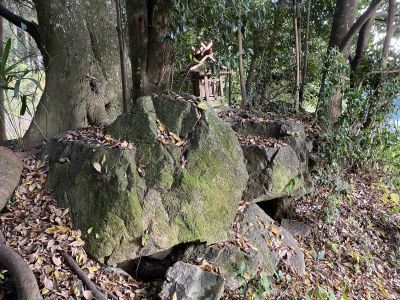


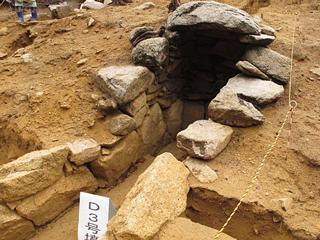

Sean bienvenidos, japonsistasarqueológicos, a una nueva entrega arqueológica, en esta ocasión os voy a hablar del túmulo Shofuku-ji una vez dicho esto, pónganse cómodos que empezamos. - ¿Dónde se localiza el túmulo Shofuku-ji? Se localiza en la ciudad de Kawanishi, en la prefectura de Hyōgo, localizado a su vez en la región de Kansai. La cámara funeraria se descubrió en la era Meiji. En 1934, el Dr. Sueharu Umehara de la Universidad de Kyoto realizó un estudio de campo y en la década de 1970, se realizó un estudio llevado a cabo por la Junta de Educación de la ciudad de Kawanishi que descubrió un ataúd de madera en la que se enterraron: puntas de flecha de hierro, espadas de hierro. - Data del siglo V y el siglo V y corresponde al periodo Kofun, con una longitud total de 40 m y fue construido a principios del siglo VI. Se descubrió un haniwa, que fue desenterrado durante la excavación, y se hizo de una manera muy similar al haniwa en la región de Owari que corresponde a la actual prefectura occidental de Aichi. - Espero que os haya gustado y nos vemos en próximas publicaciones, que pasen una buena semana. 日本の考古学者の皆さん、ようこそ!今回は、正福寺古墳についてお話します!では、早速始めましょう。 - 正福寺塚はどこにあるのですか?関西地方に位置する兵庫県川西市にあります。古墳が発見されたのは、明治時代です。1934年に京都大学の梅原末治博士が現地調査を行い、1970年代には川西市教育委員会の調査で木棺が発見され、その中に鉄鏃、鉄剣、鉄刀が埋められていました。 - 5~5世紀の古墳時代に相当し、全長40m、6世紀初頭に造られたものである。発掘調査で出土した埴輪は、現在の愛知県西部の尾張地方にある埴輪と酷似した作りのものが発見されています。
Welcome, Japanese archaeologists, to a new archaeological instalment, this time I am going to talk to you about the Shofuku-ji tumulus, having said that, make yourselves comfortable and let's get started. - Where is the Shofuku-ji mound located? It is located in the city of Kawanishi, Hyōgo Prefecture, located in the Kansai region. The burial chamber was discovered in the Meiji era. In 1934, Dr. Sueharu Umehara of Kyoto University conducted a field survey and in the 1970s, a survey conducted by the Kawanishi City Board of Education uncovered a wooden coffin in which were buried: iron arrowheads, iron swords, and iron swords. - It dates from the 5th-5th century and corresponds to the Kofun period, with a total length of 40 m and was built in the early 6th century. A haniwa, which was unearthed during excavation, was discovered and made in a very similar manner to the haniwa in the Owari region of what is now western Aichi Prefecture. - I hope you liked it and see you in future posts, have a nice week.

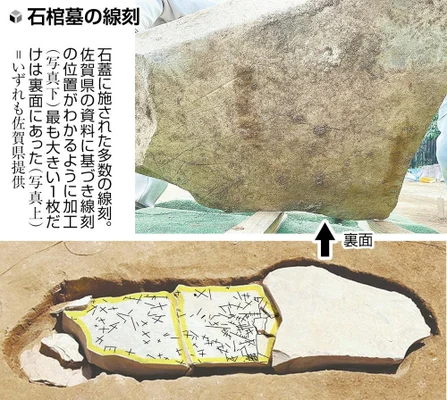



Sean bienvenidos, japonistasarqueológicos, a una nueva entrega de arqueología nipona, una vez dicho esto pónganse cómodos qué empezamos. - Nos volvemos a trasladar a la prehistoria japonesa que, cada día, nos sorprende con un nuevo hallazgo arqueológico. Las ruinas de Yoshinogari, datan del periodo Yayoi, pero en este caso del Yayoi tardio y se localizan en la prefectura de saga. - Se trata de una tumba de unos dos metros de largo¿Quién estaba enterrado en ella? Futuras investigaciones arrojarán luz. ¿Qué opinan ustedes sobre este hallazgo? - Os deseo una feliz semana y nos vemos en próximas publicaciones. 日本の考古学者たちよ、ようこそ!それでは、くつろいでいただき、始めましょう。 - 毎日、新しい考古学的発見で私たちを驚かせてくれる日本の先史時代へと話を戻します。吉野ヶ里遺跡は、佐賀県にある弥生時代後期の遺跡です。 - 古墳の長さは約2メートル。 誰が埋葬されていたのだろうか。この発見は、今後の研究によって明らかにされるでしょう。 あなたはどう思われますか? - それでは、今週もよろしくお願いします。また、今後の記事でお会いしましょう。 - Welcome, Japanese archaeologists, to a new instalment of Japanese archaeology, so make yourselves comfortable and let's get started. - We move back to Japanese prehistory, which surprises us every day with a new archaeological find. The ruins of Yoshinogari, dating back to the Yayoi period, but in this case to the late Yayoi period, are located in the prefecture of Saga. - The tomb is about two metres long. Who was buried in it? Further research will shed light on this discovery. What do you think about it? - I wish you a happy week and see you in future posts.

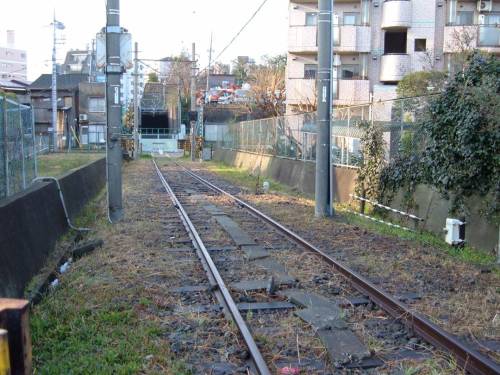

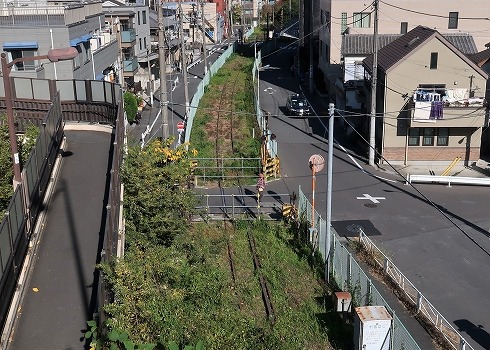

Sean bienvenidos a un Japón distinto del que muchos turistas pasan de largo por las grandes ciudades turísticas. — Espero que os guste y nos vemos en próximas publicaciones, que pasen una buena semana. - 観光都市で多くの観光客が通り過ぎる日本とは異なる日本へようこそ。 - 今後の記事でお会いできることを楽しみにしています。 - Welcome to a different Japan from the one that many tourists pass by in the big tourist cities. - I hope you like it and see you in future posts, have a nice week.


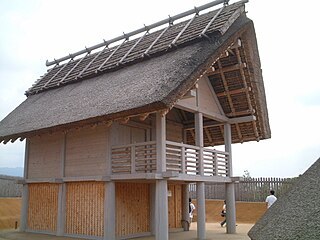



Sean bienvenidos, japonistasarqueológicos, a una nueva entrega de arqueología nipona, una vez dicho esto pónganse cómodos qué empezamos. - Nos volvemos a trasladar a la prehistoria japonesa que, cada día, nos sorprende con un nuevo hallazgo arqueológico. Las ruinas de Yoshinogari, datan del periodo Yayoi(III-IV) pero en este caso del Yayoi tardío y se localizan en la prefectura de Saga¿Cuándo llegó el arroz a japón? Y¿por dónde llegó? Hay dos teorías: una que llegó de china y la otra desde Corea hasta la isla de Kyushu a través del mar de Ariake. El enorme asentamiento está rodeado por tres fosos y es la raíz de los castillos en Japón, ha sido seleccionado como uno de los 100 castillos más famosos de Japón. - En el periodo Yayoi, se caracteriza porque es cuando aparecen las clases guerras y las clases dirigentes a raíz de la acumulación de poder, esto corresponde a los jefes locales, por ejemplo: La residencia de la clase dominante en el recinto interior sur, no confundir con realeza japonesa, hay que recordar que a los poblados se les instalaba un punto religioso, por aquella época predominaba el Sintoismo como: es el caso del santuario principal construido en el recinto interior norte. - El yacimiento cuenta con atalaya del recinto interior sur, de carácter defectivo, al sur se encuentra el pueblo con viviendas tipo foso y almacenes para guardar el arroz rojo que era el que se cultivaba en aquella época y en la ciudad de Karatsu, también en la prefectura de Saga, se encuentran las ruinas de Nabatake, las ruinas de cultivo de arroz más antiguas de Japón. - Durante el periodo Yayoi y Kofun tuvieron lugar una serie de migraciones desde la península de corea, esto trajo consigo que las poblaciones coreanas y japonesas de la zona se mezclaran generando mestizos, además de transmitir sus conocimientos de la agricultura. - Espero que os haya gustado y nos vemos en próximas publicaciones, que pasen una buena semana. Welcome, Japanese archaeologists, to a new instalment of Japanese archaeology, so make yourselves comfortable and let's get started. - We move back to Japanese prehistory, which surprises us every day with a new archaeological find. The ruins of Yoshinogari, dating from the Yayoi period (III-IV) but in this case from the late Yayoi period, are located in the prefecture of Saga When did rice arrive in Japan? And where did it arrive? There are two theories: one that it came from China and the other from Korea to the island of Kyushu via the Ariake Sea. The huge settlement is surrounded by three moats and is the root of castles in Japan, it has been selected as one of the 100 most famous castles in Japan. - The Yayoi period is characterised by the emergence of the warring and ruling classes as a result of the accumulation of power, this corresponds to the local chiefs, for example: The residence of the ruling class in the southern inner precinct, not to be confused with Japanese royalty, it should be remembered that the villages had a religious point installed, at that time Shintoism predominated, such as the main shrine built in the northern inner precinct. - The site has a watchtower in the southern inner enclosure, which is defective, to the south is the village with moat-like dwellings and warehouses for storing the red rice that was cultivated at the time, and in the town of Karatsu, also in Saga Prefecture, are the ruins of Nabatake, the oldest rice cultivation ruins in Japan. - During the Yayoi and Kofun period a series of migrations from the Korean peninsula took place, which resulted in the mixing of the Korean and Japanese populations in the area and the passing on of their knowledge of agriculture. - I hope you liked it and see you in future posts, have a good week.





Sean bienvenidos japonistasarqueológicos, a una nueva entrega de arqueología nipona en esta ocasión os hablaré del castillo de Sunpu que se encuentra en la ciudad de Shizuoka, en la Prefectura de Shizuoka. - El castillo de Sunpu, fue en el lugar en donde vivó, Ieyasu Tokugawa en los siglos XVI-XVII, donde pasó sus últimos años de vida, las ruinas de las torres del castillo que se construyeron con diferentes métodos de construcción durante el período Sengoku y el período Edo. - Sunpu Castle Park es uno de los lugares turísticos representativos de la ciudad de Shizuoka es un parque que utiliza las ruinas del castillo, macizo de flores Aoi lleva el logo de la familia de Tokugawa como proyecto conmemorativo del 400 aniversario de Ieyasu Tokugawa. El área está bajo excavación, se encuentra en la zona noroeste y se está realizando actualmente la excavación de la torre del castillo. - Hay una parte del castillo que está muy reconstruida y que se puede visitar con un módico precio, dado que el segundo piso y los superiores no se pueden abrir al público debido a la ley de construcción, el piso se quita para que la estructura se pueda ver desde abajo. - La Puerta Este/Tatsumi Yagura, está rodeada por un foso y está cerca de la estación Shin-Shizuoka. La torreta Tatsumi Higashigomon y Tatsumi Yagura están conectadas,el Tatsumi Yagura fue restaurado en 1989 y la puerta este se restauró en 1996. La entrada al jardín Momijiyama está cerca de la puerta norte del parque del castillo de Sumpu. Hay un gran estanque en el centro, y está dividido en 9 áreas que se asemejan al paisaje de Shizuoka con flores de temporada. Hay una estatua de Yaji-san y Kita-san fue construida para conmemorar el 200 aniversario. - En 1585, Tokugawa Ieyasu comenzó la construcción del castillo y en 1588 se completó la torre del castillo Sunpu.Incluso después de que Ieyasu empezará el shogunato de Edo en 1603 y se mudó a Edo, la familia Tokugawa continuó preparándolo.Se dice que es el lugar donde Ieyasu regresó al castillo de Sumpu en 1607, se retiró y murió en 1616 a la edad de 75 años. - Espero que os haya gustado y nos vemos en próximas publicaciones, pasen una buena semana.
Welcome, Japanese archaeologists, to a new instalment of Japanese archaeology. This time I will be talking about Sunpu Castle, located in the city of Shizuoka, Shizuoka Prefecture. - Sunpu Castle was the place where Ieyasu Tokugawa lived in the 16th-17th centuries, where he spent the last years of his life. The ruins of the castle towers were built with different construction methods during the Sengoku and Edo periods. - Sunpu Castle Park is one of the representative tourist sites of Shizuoka City is a park that uses the ruins of the castle, Aoi flowerbed bears the logo of the Tokugawa family as a project commemorating the 400th anniversary of Ieyasu Tokugawa. The area is under excavation, it is located in the northwest area and the excavation of the castle tower is currently underway. - There is a part of the castle that is heavily reconstructed and can be visited for a small fee, as the first floor and above cannot be opened to the public due to construction law, the floor is removed so that the structure can be seen from below. - The East Gate/Tatsumi Yagura, is surrounded by a moat and is close to Shin-Shizuoka Station. The Tatsumi Higashigomon turret and Tatsumi Yagura are connected, the Tatsumi Yagura was restored in 1989 and the east gate was restored in 1996. The entrance to Momijiyama Garden is near the north gate of Sumpu Castle Park. There is a large pond in the centre, and it is divided into 9 areas that resemble the Shizuoka landscape with seasonal flowers. There is a statue of Yaji-san and Kita-san was built to commemorate the 200th anniversary. - In 1585, Tokugawa Ieyasu started the construction of the castle and in 1588 the Sunpu castle tower was completed. Even after Ieyasu started the Edo shogunate in 1603 and moved to Edo, the Tokugawa family continued to prepare it. It is said to be the place where Ieyasu returned to Sumpu castle in 1607, retired and died in 1616 at the age of 75. - I hope you liked it and see you in future posts, have a nice week.
日本の考古学者の皆さん、新しい日本考古学へようこそ。今回は、静岡県静岡市にある駿府城についてお話します。 - 駿府城は、16 世紀から 17 世紀にかけて徳川家康が晩年を過ごした場所です。天守閣跡は、戦国時代から江戸時代にかけてさまざまな工法で築かれました。
-
静岡市を代表する観光地の一つである駿府城公園は、徳川家康公400年記念事業として城跡を利用した公園で、葵花壇には徳川家のマークが刻まれています。発掘調査中のエリアで、北西部に位置し、現在天守閣の発掘調査が行われています。
-
城の一部は大規模に復元されており、1階以上は建築法の関係で一般公開できないため、床を撤去して下から構造を見学できるようになっており、低料金で見学できる。 。
-
新静岡駅からもほど近い、お堀に囲まれた東門・巽櫓。巽東御門櫓と巽櫓はつながっており、巽櫓は1989年、東門は1996年に復元されました。紅葉山庭園の入り口は駿府城公園の北門近くにあります。中央に大きな池があり、季節の花々が彩る静岡の風景をイメージした9つのエリアに分かれています。弥次さんと喜多さんの像があり、200年を記念して建てられました。
-
1585年に徳川家康が築城を開始し、1588年に駿府城天守閣が完成しました。 1603年に家康が江戸幕府を開き、江戸に移った後も、徳川家では仕込み続けられました。 1607年に家康が駿府城に戻り、隠居し、1616年に75歳で亡くなった場所といわれています。
-
気に入っていただければ幸いです。今後の投稿でお会いしましょう。良い一週間をお過ごしください。






Sean bienvenidos, japonistasarqueologos, a una nueva entrega en esta ocasión os presento por encima a un nuevo Yōkai una vez dicho esto pónganse cómodos que empezamos. - En todo el mundo hay nutrias, pero por desgracia, están desapareciendo por qué el hombre las cazaba para pieles etc. Actualmente, quedan muy pocas y es ilegal tenerlas como mascota solo si tienes permiso. - Pero en este caso nos trasladamos a Japón y comentaré por encima a las nutrias de río, son consideras un demonio o espíritu llamados Yōkai y reciben el nombre de Kawauso y en hiragana (かわうそ), hay muchos animes que abarcan este tema. ¿Conocían este Yōkai? - Espero que os guste y nos vemos en próximas publicaciones, que pasen una buena semana. - 日本びいきの皆さん、考古学者の皆さん、ようこそ新連載へ。今回は新しい妖怪を紹介しよう。 - カワウソは世界中に生息しているが、人間が毛皮などのために狩りをしたため、残念ながら姿を消しつつある。現在ではほとんど残っておらず、ペットとして飼うには許可を得なければ違法となっている。 - カワウソは妖怪と呼ばれ、ひらがなで「かわうそ」と呼ばれ、この話題を扱ったアニメがたくさんあります。 この妖怪を知っていますか? - それでは、また次の記事でお会いしましょう。 - Welcome, Japanophiles and archaeologists, to a new installment, this time I will introduce you to a new Yōkai, having said that, make yourselves comfortable and let's get started. - There are otters all over the world, but unfortunately, they are disappearing because humans used to hunt them for fur etc. Nowadays, there are very few of them left and it is illegal to keep them as pets only if you have a permit. - But in this case we move to Japan and I will comment on the river otters, they are considered a demon or spirit called Yōkai and are called Kawauso and in hiragana (かわうそ), there are many anime that cover this topic. Did you know this Yōkai? - Hope you like it and see you in next posts, have a nice week.

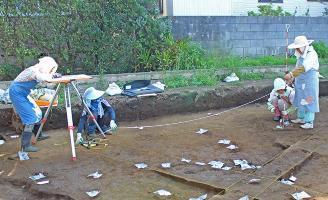
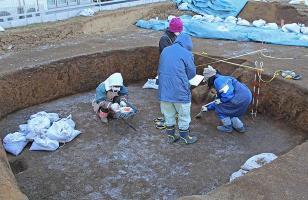

Sean bienvenidos japonistasarqueológicos, a una nueva entrega de arqueología japonesa, una vez dicho esto pónganse cómodos que empezamos. - Antes que nada:¿Qué entendemos por una excavación arqueológica? Consiste en extraer los restos materiales de las culturas del pasado a esto se le llama cultura arqueológica por ejemplo: los restos viviendas de fosa y hoyos. Los restos arqueológicos, se localizan en la Ciudad de Narashino, en la prefectura de Chiba, los restos podrían tratarse del periodo jomon (15.000/16.000 a.c) - Espero que os haya gustado y nos vemos en próximas publicaciones, que pasen una buena semana. - 日本の考古学者たちよ、ようこそ。そう言われたら、くつろいで、さっそく始めましょう。 - まず、考古学的発掘とはどういうことかというと、過去の文化の物質的遺構を取り出すことであり、これを考古学的文化と呼びます。例えば、竪穴住居跡やピット跡などです。千葉県習志野市にあるこの遺跡は、縄文時代(紀元前15,000~16,000年)のものと思われます。 - 気に入っていただけたでしょうか、また今後の記事でお会いしましょう、良い一週間をお過ごしください。 Welcome, Japanese archaeologists, to a new installment of Japanese archaeology, and once that's been said, make yourselves comfortable and let's get started. - First of all: What do we mean by an archaeological excavation? It consists of extracting the material remains of the cultures of the past, this is called archaeological culture, for example: the remains of pit dwellings and pits. The archaeological remains, located in Narashino City, Chiba Prefecture, may date back to the Jomon period (15,000/16,000 BC). - I hope you liked it and see you in future posts, have a nice week.





Sean bienvenidos japonítasarqueológicos a una nueva entrega de última hora, china amenaza seriamente las aguas gubernamentales Taiwanesas, con una maniobras de entrenamiento. - Ya hace poco hice una publicación sobre el tema, mencioné que lo que China quiere es apoderarse de la industria de microchips para adueñarse de el mundo. - Esto es una amenaza ya que a tan solo 749 kilómetros esta Okinawa, lo cual Japón no se va a quedar de brazos cruzamos. - ¿Se trata de una guerra fría 2.0? ¿Qué harán los japoneses al respecto?¿Reclamaran las islas Kuriles? - Espero que os haya gustado y nos vemos el día 21, hasta entonces pasen una buena semana. - 日本の考古学者の皆さん、ようこそ!新しい速報です!中国は、訓練操作で台湾の政府水域を本気で脅かしています。 - 先日、中国が世界征服のためにマイクロチップ産業を買収しようとしているといった内容の記事を書きました。 - 沖縄は749キロしか離れていないので、これは脅威であり、日本は黙って見ているわけにはいきません。 - 冷戦2.0か? 日本はどうするのか? 千島列島の領有権を主張するのか? - 21日にお会いしましょう、それまで良い一週間をお過ごしください。 Welcome, Japanese archaeologists, to a new breaking news item, China is seriously threatening Taiwanese government waters with a training manoeuvre. - I recently did a post on the subject, I mentioned that China wants to take over the microchip industry to take over the world. - This is a threat because Okinawa is only 749 kilometres away, which Japan is not going to stand idly by. - Is this a Cold War 2.0? What will the Japanese do about it? Will they claim the Kuril Islands? - I hope you liked it and see you on the 21st, until then have a good week.

Sean bienvenidos japonistasarqueológicos, a una nueva entrega de actualidad nipona una vez dijo esto pónganse cómodos que empezamos. - Hoy sábado día 15/04/2023, ha tenido lugar un atentado contra la vida de Fumio Kishida, un joven de 24 años sospechoso de las explosiones causadas en contra del presidente. El puerto estaba envuelto por los gritos de la gente y el incidente ocurrió frente a la cámara pasadas las 11:00 horas del día 15. El lugar es Saikazaki, un puerto en la parte occidental de la ciudad de Wakayama, localizado en la región de Kansai, por suerte salió ileso. - ¿Qué opinan ustedes? Espero que pasen una buena semana y nos vemos en próximas publicaciones.
-
日本の考古学者たちよ、ようこそ、日本の時事問題の新しい回へ。 これだけ言っておけば、あとは楽にしてください、では始めましょう。 - 本日2023年04月15日(土)、大統領に対して引き起こされた爆発事件の容疑者である岸田文雄(24歳)の命が狙われた。 港は人々の悲鳴に包まれ、15日午前11時過ぎにカメラの前で事件は起こった。場所は関西に位置する和歌山市の西部にある港、雑賀崎、幸いにも彼は無傷だった。 - いかがでしょうか?今週も良い一週間をお過ごしください!また、今後の記事でお会いしましょう。
-
Welcome, Japanese archaeologists, to a new installment of Japanese current affairs. Once this has been said, make yourselves comfortable and let's get started. - Today, Saturday 15/04/2023, an attempt was made on the life of Fumio Kishida, a 24 year old suspect in the explosions caused against the president. The port was surrounded by the shouting of people and the incident occurred in front of the camera after 11:00 a.m. on the 15th. The place is Saikazaki, a port in the western part of Wakayama city, located in the Kansai region, luckily he was unharmed. - What do you think? I hope you have a good week and I'll see you in future posts.


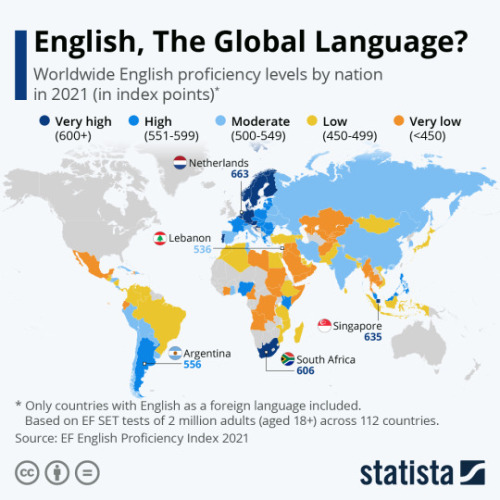
Parte 2:Razones por las que a los japoneses jamás se le va a dar bien el inglés: Sean bienvenidos, japonistasarqueológicos, a una nueva entrega, en esta ocasión hablamos del inglés en Japón, una vez dicho esto pónganse cómodos qué empezamos. - Por la que a los japoneses les cuesta el inglés más de una te sorprenderá, los japoneses para poder aprender inglés desde cero les lleva alrededor de 500 horas alcanzar el nivel principiante; sin embargo, se necesitan unas 250 horas para aprender coreano o indonesio al mismo nivel principiante. Una de las razones por las que los japoneses no son buenos en inglés es debido a la pronunciación, esto es un hecho. - La estructura gramatical del inglés es: SVO (sujeto-verbo-objeto) donde el verbo va primero, mientras que en japonés, SOV (Sujeto-Objeto-Verbo) donde el verbo va al final. Además, la estructura de las oraciones difiere entre el inglés y el japonés, el inglés es muy estricto en cuanto al orden de las palabras. En japonés utilizamos unas 120 palabras en un minuto de conversación normal. El inglés emplea aproximadamente 1,5 veces más palabras, razón por la cual los japoneses sienten que hablan inglés más rápido. Por ejemplo, la palabra japonesa “personalidad” tiene tres fonemas. Cuando se trata de inglés, necesitamos cinco fonemas: pa/so/na/li/ti, y para transmitir la misma información, necesitamos hablar más rápido. La razón por la que a los japoneses les resulta difícil escuchar y hablar inglés es probablemente porque se les exige que usen habilidades que normalmente no emplean. パート2:日本人が決して英語が得意にならない理由:日本の考古学者たちよ、新しい回へようこそ!今回は日本の英語について話す。 - なぜ日本人は英語が苦手なのか?日本人がゼロから英語を学んで初級レベルに達するには約500時間かかるが、韓国語やインドネシア語を学んで同じ初級レベルに達するには約250時間かかる。日本人が英語を苦手とする理由のひとつに発音があるが、これは事実である。 - 英語の文法構造はSVO(Subject-Verb-Object)で動詞が先に来るのに対し、日本語はSOV(Subject-Object-Verb)で動詞が最後に来る。また、文の構造も英語と日本語では異なり、英語は語順に非常に厳しい。日本語の場合、通常の会話で1分間に使う単語は約120語。英語はその約1.5倍の単語を使うので、日本人は英語を話すのが早いと感じるのです。例えば、日本語の「パーソナリティ」という単語には3つの音素がある。それが英語になると、パ/ソ/ナ/リ/ティの5つの音素が必要になり、同じ情報を伝えるためには、より速く話す必要がある。日本人が英語を聞くのも話すのも難しいと感じるのは、普段使わない能力を要求されるからだろう。 - 今後の記事でお会いできることを楽しみにしています。 Part 2: Reasons why the Japanese will never be good at English: Welcome, Japanese archaeologists, to a new instalment, this time we are talking about English in Japan, so make yourselves comfortable and let's get started. - Why the Japanese have a hard time with English more than one will surprise you, it takes the Japanese around 500 hours to learn English from scratch to reach beginner level; however, it takes around 250 hours to learn Korean or Indonesian to the same beginner level. One of the reasons why Japanese people are not good at English is because of pronunciation, this is a fact. - The grammatical structure of English is: SVO (Subject-Verb-Object) where the verb comes first, while in Japanese, SOV (Subject-Object-Verb) where the verb comes last. Also, sentence structure differs between English and Japanese, English is very strict about word order. In Japanese we use about 120 words in one minute of normal conversation. English uses about 1.5 times as many words, which is why Japanese people feel they speak English faster. For example, the Japanese word "personality" has three phonemes. When it comes to English, we need five phonemes: pa/so/na/li/ti, and to convey the same information, we need to speak faster. The reason why Japanese people find it difficult to listen to and speak English is probably because they are required to use skills they do not normally use. - I hope you like it and see you in future posts, have a good week.




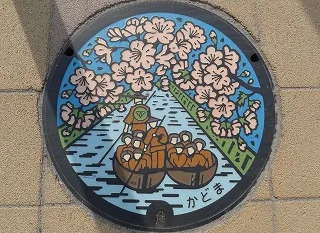
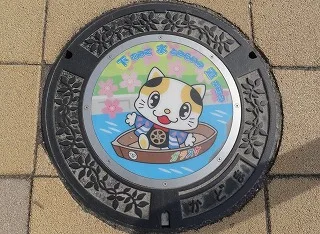

Sean bienvenidos japonistasarqueologos, a una nueva entrega en la cual os expondré una serie de fotos de tapas de alcantarilla japonesas. - Seguramente muchos os preguntaréis que tienen de especial porque están en todo el mundo civilizado, pero cada país tiene su estilo propio como en: Finlandia, entre otros muchos. - Pero Japón vive en el año 2050, seguramente que han escuchado esta expresión muchas veces y la verdad es que esto es una prueba de que Japón coge las cosas y las mejora a niveles planetarios. ¿Conocían esto? ¿Qué opinan? Os leo encantado. - Espero que os haya gustado y nos vemos en próximas publicaciones que pasen una buena semana. - 日本の考古学者の皆さん、日本のマンホールの蓋の写真を紹介する新連載へようこそ。 - マンホールの蓋は文明国中どこにでもあるが、国によって独自のスタイルがある:フィンランド、その他多数。 - しかし、日本は2050年に生きている。きっと、この表現を何度も耳にしたことがあるだろうが、真実は、日本が物事を捉え、惑星レベルまで改善している証拠なのだ。 あなたはこのことをご存知でしたか?私はそれを読んで喜んでいる。 - 今後の記事でお会いできることを楽しみにしています。 - Welcome Japanese archaeologists, to a new installment in which I will show you a series of photos of Japanese manhole covers. - Surely many of you will wonder what is so special about them because they are all over the civilized world, but each country has its own style as in: Finland, among many others. - But Japan is living in the year 2050, surely you have heard this expression many times and the truth is that this is proof that Japan takes things and improves them to planetary levels. Did you know this, what do you think? I am delighted to read it. - I hope you liked it and see you in future posts have a nice week.





Sean bienvenidos Japonistasarqueologíacos, a una nueva publicación síntesis, del país del Sol naciente, una vez dicho esto póngase cómodos que empezamos. - Vamos a hablar de la batalla de Toba-Fushimi 27 de Enero 1868-31 Enero 1868, que forma parte de las Guerras Boshin, de carácter civil. - Está batalla la vamos a ver a través del arte que fue realizado por Tsukioka Yoshitoshi, perteneciente al Ukio-e. ¿Conocían la batalla? - Espero que os guste y nos vemos en próximas publicaciones, que pasen una buena semana. - 日出ずる国から、日本の考古学へようこそ、新しい要約出版物へ。 - 民事上の戊辰戦争の一部である、1868年1月27日から1868年1月31日にかけて行われた鳥羽・伏見の戦いについてお話します。 - 浮世絵に属する月岡芳年の作品を通して、この戦いを見てみます。 彼らはその戦いを知っていたのか? - 気に入っていただければ幸いです。今後の投稿でお会いしましょう。良い一週間をお過ごしください。 Welcome to Japanese archaeology, to a new summary publication, from the country of the rising sun. Having said that, make yourself comfortable and let's get started. - We are going to talk about the battle of Toba-Fushimi January 27, 1868-January 31, 1868, which is part of the Boshin Wars, of a civil nature. - We are going to see this battle through the art that was made by Tsukioka Yoshitoshi, belonging to Ukio-e. Did they know the battle? - I hope you like it and see you in future posts, have a good week.




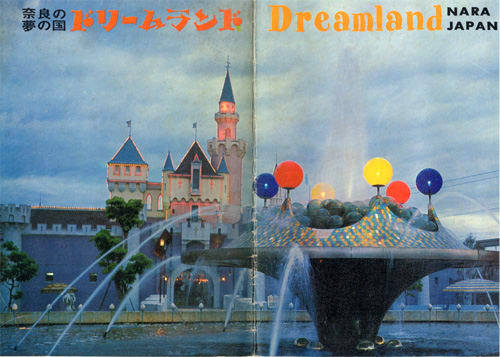


Sean bienvenidos japonistasarqueológicos, a una nueva entrega, esta ocasión nos trasladamos al antiguo solar donde se localizaba el antiguo parque de atracciones Nara dreamland. - Esperó que os guste y nos vemos en próximas publicaciones, que pasen una buena semana.¿Lo conocían? - 今回は、旧奈良ドリームランド遊園地があった場所に移動して、新たな回をお届けします。 - あなたがそれを好きで、今後の出版物でお会いすることを望みます、良い一週間を過ごしてください、あなたはそれを知っていましたか? - Welcome to a new installment, this time we move to the old site where the former Nara dreamland amusement park was located. - I hope you like it and see you in future publications, have a good week, did you know it?





Sean bienvenidos japonsistasarqueológicos, a una nueva entrega cultural en esta ocasión os voy comentar la festividad, del día del niño que se celebra cada 5 de Mayo que se llama Kodomo no Hi y se escribiríaこどもの日 una vez dicho esto pónganse cómodos que empezamos. - ¿Cuándo surgió el día del niño?La festividad, surge en el siglo VIII d.c en lo que respondería al periodo Heian, posiblemente tendría influencia de china al respecto ya que se basó en Tango no Sekku. El Sekku se basa en los puntos de inflexión de las estaciones y se basa en la teoría de los cinco elementos del yin y el yang en China. - La forma tradicional de celebrarlo es ofrecer ofrendas estacionales a los dioses, rezar y comer juntos los productos de segunda mano.En el período Kamakura, en pleno auge de los samurais, se convirtió en un evento importante para orar por el crecimiento y la salud de los niños y la prosperidad de la familia, con adornos como armaduras, cascos, serpentinas de carpa y muñecos festivos. - Ahora a continuación mencionaré algunos dulces de los que se suelen comer el 5 de Mayo: Kashiwa mochi,Chimaki, beko mochi, akumaki , pastel no koi. - Espero que os haya gustado y nos vemos en próximas publicaciones y que pasen un feliz día del niño.
-
今回は、毎年5月5日に行われる「こどもの日」というお祭りについてお話しします。「こどもの日」とは、「こどもの日」と書いて「こどもの日」と読みます。 - こどもの日」の起源は、紀元8世紀の平安時代にさかのぼりますが、「端午の節句」が元になっていることから、中国の影響を受けている可能性があります。節句とは、季節の変わり目を表すもので、中国の陰陽五行説に基づくものです。 - 季節のお供え物を神に捧げ、祈り、中古品をみんなで食べるのが伝統的な祝い方です。 武士ブーム真っ只中の鎌倉時代には、甲冑や兜、こいのぼり、祝い人形などを飾り、子供の成長や健康、家族の繁栄を祈る大切な行事となりました。 - 柏餅、ちまき、べこ餅、あくまき、こいのぼりのお菓子です。 - 気に入っていただけたなら幸いです。今後の記事でお会いしましょう。そして、楽しい子供の日をお過ごしください。
-
Welcome to a new cultural delivery in this occasion I am going to comment on the festivity, the day of the child that is celebrated every 5th of May that is called Kodomo no Hi and it would be writtenこどもの日 once said this make yourselves comfortable that we begin. - When did Children's Day come about? The holiday, which dates back to the 8th century AD in what would be the Heian period, was possibly influenced by Chinese in this respect as it was based on Tango no Sekku. Sekku is based on the turning points of the seasons and is based on the five element theory of yin and yang in China. - The traditional way to celebrate it is to offer seasonal offerings to the gods, pray and eat second-hand goods together. In the Kamakura period, at the height of the samurai boom, it became an important event to pray for the growth and health of children and the prosperity of the family, with decorations such as armour, helmets, carp streamers and festive dolls. - Now here are some of the sweets usually eaten on May 5th: Kashiwa mochi, Chimaki, beko mochi, akumaki, no koi cake. - I hope you liked it and see you in future posts and have a happy children's day.


権力者の冠をデザイン? 天皇陵出土説もある謎の石枕の正体に迫る.
Designing the crown of a powerful person? Uncovering the true nature of the mysterious stone pillow that is said to have been excavated from the Emperor's tomb.




Sean bienvenidos, japonistasarqueologicos a una nueva entrega en la que hablaremos sobre el asunto de Japón y las aguas residuales al mar una vez dicho esto pongan cómodos que empezamos. - Hace poco están en todos los medios de comunicación del mundo, que Japón tiene luz verde por la ONU para verter agua tratada en la planta nuclear de Fukushima en el accidente acontecido en 2011. - Hay más de 1.000 tanques y 1,34 millones de toneladas, posiblemente al 98% de la capacidad, además se está analizando el agua de mar y los alrededores de la central nuclear, actualmente se está analizando la concentración de tritio, los resultados estarán disponibles el día 25 por la tarde, previamente se habían tomado muestras de agua de los depósitos dando como resultado que era seguro, pero posiblemente tendrían que haber esperado más tiempo. - La población japonesa, se manifiesta al respecto porque esto va a generar problemas a largo plazo a la economía mundial. China suspende todas las importaciones de productos del mar japoneses, no se iba a quedar de brazos cruzados ¿Qué opinan ustedes al respecto? - Espero que os haya gustado y nos vemos en próximas publicaciones que pasen una buena semana.
考古学の日本研究者の皆様、ようこそ!今回は、日本と海への汚水問題についてお話しします。
最近、日本が2011年の福島原発事故の処理水を海洋投棄することを国連から許可されたことが世界中のメディアを賑わせている。
タンクは1000基以上、134万トンあり、おそらく容量の98%であろう。また、海水と原発周辺は分析中で、現在はトリチウムの濃度が分析されており、25日の午後に結果が出る予定である。以前は貯水池から水を採取し、安全であるという結果を出していたが、おそらくもっと待つべきだったのだろう。
日本国民が抗議しているのは、これが世界経済に長期的な問題を引き起こすからである。中国が日本産水産物の輸入を全面的に停止したのだから、黙って見過ごすわけがない。 これについてどう思う?
お気に召していただけたなら幸いである。 それではまた、良い一週間を。
Welcome, japonistasarqueologicos to a new installment in which we will talk about the issue of Japan and sewage into the sea, that said, make yourselves comfortable and let's get started. - It has recently been all over the world's media that Japan has been given the green light by the UN to dump treated water into the Fukushima nuclear power plant from the 2011 accident. - There are more than 1,000 tanks and 1.34 million tons, possibly at 98% of capacity, also the sea water and the surroundings of the nuclear plant are being analysed, currently the concentration of tritium is being analysed, the results will be available on the 25th in the afternoon, previously water samples had been taken from the reservoirs giving as a result that it was safe, but possibly they should have waited longer. - The Japanese people are protesting because this is going to create long-term problems for the world economy. China suspends all imports of Japanese seafood, they are not going to sit back and do nothing. What do you think about this? - I hope you liked it and I'll see you in future posts. Have a good week.

Sean bienvenidos, japonistasarqueológicos a una nueva entrega en esta ocasión os presento a otro arqueólogo que excavó en el yacimiento del Toro en la arqueología de posguerra. - En la publicación anterior comentamos, que era la arqueología de posguerra, mencionamos el milagro japonés y de cómo tras la guerra japón supo reponer sus heridas con cierta rapidez y el yacimiento del Toro es un testimonio de ello. En esta publicación, el personaje en esta ocasión se trata de,Takeji Kikukawa Nacido en 1932, que corresponde a la era Showa. - Fue estudiante de la escuela secundaria Fujieda Higashi localizada en la prefectura de Shizuoka, se dedicó a los periodo yayoi y Jamón estudiando su cultura material, sobre todo la cerámica del periodo yayoi y las pesas de piedra del periodo Jomon. - Espero que os haya gustado y nos vemos en próximas publicaciones que pasen una buena semana. 日本の考古学者たちよ、戦後の考古学で登呂遺跡を発掘したもう一人の考古学者を歓迎しよう。 - 前回は戦後考古学について、日本の奇跡と戦後日本がいかに早く立ち直ったか、そしてエル・トロ遺跡がその証であることをお話ししました。今回の登場人物は、1932年生まれの菊川武治である。 - 静岡県立藤枝東高等学校に在籍し、弥生・縄文時代の物質文化、特に弥生時代の陶磁器や縄文時代の石錘の研究に没頭した。 - それでは、また次回もお楽しみください。
Welcome, Japanese archaeologists, to another post-war archaeologist who excavated at the Toro site in post-war archaeology. - In the previous publication we talked about post-war archaeology, we mentioned the Japanese miracle and how after the war Japan was able to recover its wounds quite quickly and the site of El Toro is a testimony of that. In this publication, the character on this occasion is Takeji Kikukawa, born in 1932, which corresponds to the Showa era. - He was a student at Fujieda Higashi High School in Shizuoka Prefecture. He was devoted to the Yayoi and Jomon periods, studying their material culture, especially the ceramics of the Yayoi period and the stone weights of the Jomon period. - I hope you enjoyed it and see you in future posts have a nice week.

Sean bienvenidos, japonistasarqueológicos a una nueva entrega en esta ocasión os presento a uno de los arqueólogos que excavan en el yacimiento del Toro en la arqueología de posguerra. - ¿Qué es la arqueología de posguerra? Disciplina, que abarca la década de 1947-1999 tras la 2 guerra mundial, Japón se dedicó a realizar excavaciones en masa, además de salir de la situación de posguerra, mejorando el país e invirtiendo en el patrimonio cultural, para que la población estuviera entretenida con otros quehaceres por ejemplo en la década de los 50 surge el famoso milagro Japonés. - Nuestro personaje en esta ocasión se trata de, kenichi Miura nacido en 1932, después de la guerra en japón surge un movimiento llamado Bunka federación y todas las escuelas querían hacer algo por la cultura. Fue una gran labor por parte del país del sol naciente a pesar de la situación en la que se encontraba digno de administración. - Espero que os haya gustado y nos vemos en próximas publicaciones que pasen una buena semana. 日本の考古学者たちよ、戦後の登呂遺跡考古学の新連載へようこそ。 - 戦後考古学とは何か?第二次世界大戦後の1947年から1999年の10年間をカバーする学問分野であり、日本は戦後の状況を離れ、国を改善し、文化遺産に投資することに加えて、国民が他の仕事で楽しまれるように、大規模な発掘に専念していた、例えば、50年代の10年間で有名な日本の奇跡が生じた。 - 今回の登場人物は、1932年生まれの三浦健一です。 戦後、日本では文化連盟という運動が起こり、各学校が文化のために何かをしようとしました。日出づる國の行政にふさわしい状況にもかかわらず、これは偉大な仕事であった。 - それでは、また次号でお会いしましょう。 良い一週間を。 Welcome, Japanese archaeologists, to a new installment of the post-war archaeology of the Toro archaeological site. - What is post-war archaeology? Discipline, which covers the decade of 1947-1999 after World War II, Japan was dedicated to mass excavations, in addition to leaving the post-war situation, improving the country and investing in cultural heritage, so that the population was entertained with other tasks, for example in the decade of the 50's the famous Japanese miracle arose. - Our character on this occasion is Kenichi Miura, born in 1932. After the war in Japan, a movement called Bunka Federation arose and all the schools wanted to do something for culture. It was a great work on the part of the country of the rising sun in spite of the situation in which it found itself worthy of administration. - I hope you liked it and see you in the next publications. Have a nice week.
for more information/詳細については:https://www.shizuoka-toromuseum.jp/toro-site/people/people-intervew01/

Sean bienvenidos, japonistasarqueológicos al yacimiento arqueológico del toro, os presento a los dos últimos, estudiantes de la arqueología de posguerra, al final haré una pequeña conclusión personal, una vez dicho esto pónganse cómodos que empezamos. - Yoshie inaba Nacida en 1932 ¿Qué aportaciones hizo en el yacimiento? Anotó todos los datos que pudo, eso facilitó mucho las futuras investigaciones, además ayudó a la gente para que no fueran muy cargadas. Os pondré una foto del Uniforme de escuela secundaria Fuji - Girls. Sr. Wan Kikawa:Nacido en 1928, le contrató uno de ingeniería civil, en lo que es ahora Hinamigo, Prefectura de Nagasaki. Él encontró los siguientes objetos: dos brazaletes de cobre superpuestos y una espada de madera, que os pondré a continuación. - Conclusión personal: Estimada audiencia, no solo veáis a los yacimientos solo por los restos, también hay personas que ayudan a preservar los restos para próximas generaciones, además si no fueran por estas personas mencionadas, anteriormente seguramente sus aportaciones al yacimiento y a la historia de Japón no hubieran facilitado las cosas todos tenemos que poner nuestro grano de arena para crear la historia humana del pasado y del futuro. Además en aquella época dada persona con lo poco tenía aportan lo que podrían al yacimiento, sobre todo los agricultores de las cercanías, por ejemplo, las dificultades son la que hacen que prosperen las cosas. Espero que os haya gustado y nos vemos en próximas publicaciones que pasen una buena semana. 日本の考古学者の皆さん、エル・トロ遺跡へようこそ。戦後考古学の学生の皆さん、最後のお二人に私は最後に小さな個人的な結論を述べます。そうは言っても、気を楽にしてから始めましょう。 - Yoshie inaba 1932 年生まれ 彼女はこのサイトにどのような貢献をしましたか? 彼はできる限りすべてのデータを書き留めたので、今後の調査がはるかに容易になり、人々が過度の負担にならないようにも助けられました。 富士高校の制服の写真を載せます - 女の子たち。 木川湾氏:1928年生まれ、現在の長崎県日並郷で土木技師に就職。 彼は次の物体を発見しました: 2 つの重なり合った銅製のブレスレットと 1 つの木の剣です。これらを以下に示します。 - 個人的な結論: 親愛なる聴衆の皆さん、遺跡の現場を訪れるだけでなく、後世のために遺跡を保存するのに協力する人々もいます。もし上記の人々がいなかったら、遺跡と歴史への彼らの貢献は間違いなくあります。私たちは皆、過去と未来の人類の歴史を創造するために自分の役割を果たさなければなりません。 さらに、当時は、ある人がなけなしの努力で現場、特に近隣の農家にできる限りの貢献をし、困難こそが繁栄を生むのです。 気に入っていただければ幸いです。今後の投稿でお会いしましょう。良い一週間をお過ごしください。
Welcome, Japanesearchaeologicalists to the archaeological site of El Toro, I present to you the last two, students of post-war archaeology, at the end I will make a small personal conclusion, having said that, make yourself comfortable and let's begin.
Yoshie inaba Born in 1932 What contributions did she make to the site? She wrote down all the data she could, which made future investigations much easier, and also helped people so that they were not burdened too much. I will post a photo of the Fuji High School Uniform
Girls. Mr. Wan Kikawa: Born in 1928, he hired him as a civil engineer, in what is now Hinamigo, Nagasaki Prefecture. He found the following objects: two overlapping copper bracelets and a wooden sword, which I will show you below. - Personal conclusion: Dear audience, do not only see the sites for the remains, there are also people who help preserve the remains for future generations, and if it were not for these people mentioned above, surely their contributions to the site and the history of Japan They would not have made things easier. We all have to do our part to create the human history of the past and the future. Furthermore, at that time, a given person with what little they had contributed what they could to the site, especially the nearby farmers, for example, difficulties are what make things prosper.
I hope you liked it and see you in future posts, have a good week.
for more information/詳細については:https://www.shizuoka-toromuseum.jp/toro-site/people/people-intervew01/





Sean bienvenidos, japonistasarqueológicos, a una nueva entrega arqueológica en esta ocasión hablaremos de un túmulo funerario con forma de ojo de cerradura una vez dicho esto pónganse cómodos que empezamos. - El túmulo se localiza en la ciudad de Yokohama, en la prefectura de Kanagawa, en la región de Kantō, isla de Honshū. Se realizaron excavaciones en las Ruinas de Oikawa Isemiya que acompañan la construcción de la carretera de circunvalación de la Ruta Nacional 246 Atsugi Hadano Road. El túmulo funerario tiene forma de ojo de cerradura, data de alrededor de los siglos III al VII d.c y fue descubierto en la cuenca del río Ogino. - El túmulo funerario, con forma de ojo de cerradura, tiene unas dimensiones de 37 metros de largo y 21 metros de ancho. En el sitio se encontraron una losa y herramientas de piedra del período Kofun. En los alrededores se han encontrado los restos de una vivienda del período Jomon. - Espero que os haya gustado y nos vemos en próximas publicaciones que pasen una buena semana. Welcome, Japanese archaeologists, to a new archaeological instalment, this time we are going to talk about a burial mound in the shape of a keyhole, so make yourselves comfortable and let's get started. - The burial mound is located in the city of Yokohama, Kanagawa Prefecture, in the Kantō region of Honshū Island. Excavations were conducted at the Oikawa Isemiya Ruins accompanying the construction of the Atsugi Hadano Road 246 National Route 246 bypass. The burial mound is keyhole-shaped, dates from around the 3rd to 7th centuries AD, and was discovered in the Ogino River basin. - The burial mound, shaped like a keyhole, is 37 metres long and 21 metres wide. A stone slab and stone tools from the Kofun period were found at the site. The remains of a Jomon period dwelling were found nearby. - I hope you liked it and I will see you in future publications. Have a nice week. 日本の考古学者の皆さん、ようこそ考古学の新連載へ!今回は鍵穴の形をした古墳についてお話しします。 - 古墳は神奈川県横浜市、本州の関東地方にある。国道246号厚木秦野道路バイパスの建設に伴い、及川伊勢宮遺跡で発掘調査が行われた。荻野川流域で発見されたこの古墳は、紀元後3世紀から7世紀ごろのもので、鍵穴のような形をしている。 - 鍵穴のような形をした古墳は、長さ37メートル、幅21メートル。古墳時代の石板や石器が出土している。近くに縄文時代の住居跡が見つかった。 - お気に召していただけたなら幸いである。 それでは、よい一週間を。 -




Sean bienvenidos japonistasarqueologicos a una nueva entrega del país del sol naciente en la que os, hablaré del Santuario Arashihiban, una vez dicho esto pónganse cómodos que empezamos. - El santuario Arashihiban, se localiza en la prefectura de Miyagi al noreste de Japón, en la isla de Honshu. Aragshinkan ¿A qué dios está dedicado? Es un dios que está envuelto en muchos misterios, además, es adorado en las regiones de Tohoku y Kanto. Arashiben-jinja se localiza en la ciudad de Tagajo y se desconoce la fecha exacta de cuando se construyó, pero consta en los registros del año 1774. - ¿En qué consiste el Tsugarusoto Sangunshi? Se trata de un antiguo documento, que fue descubierto por Kihachiro Wada. Sin embargo, ahora se podría tratar de una falsificación, Arahabaki aparece más el nombre de una familia que gobernó la región de Tsugaru(correspondería a los terratenientes europeos en Japón se les conoce como daimyō, en hiragana みょう). Dejen en los comentarios vuestra opinión, para debatirlo. - Espero que os haya gustado y nos vemos en próximas publicaciones que pasen una linda semana. Welcome Japanese archaeologists to a new installment from the land of the rising sun in which I will talk about the Arashihiban Shrine, so once you have said that, make yourselves comfortable and let's get started. - Arashihiban Shrine is located in Miyagi Prefecture in northeastern Japan, on the island of Honshu. Aragshinkan Which god is it dedicated to? It is a god that is shrouded in mystery and is worshipped in the Tohoku and Kanto regions. Arashiben-jinja is located in the city of Tagajo and the exact date of its construction is unknown, but it is recorded as being built in 1774. - What is the Tsugarusoto Sangunshi? It is an ancient document, which was discovered by Kihachiro Wada. However, it could now be a forgery, Arahabaki appears more the name of a family that ruled the Tsugaru region (corresponding to European landowners in Japan are known as daimyō, in hiragana みょう). Leave in the comments your opinion, for discussion. - I hope you liked it and see you in future posts have a nice week.
日本の考古学者の皆さん、日出ずる国からの新しい回にようこそ!今回は嵐播神社についてお話しします。 - 嵐播神社は宮城県にある。荒神館 どの神様を祀っているのですか?謎に包まれた神で、東北地方と関東地方で信仰されている。荒祭神社は多賀城市にあり、正確な創建年代は不明だが、1774年に創建されたと記録されている。 - 津軽外三郡誌とは?和田喜八郎によって発見された古文書である。しかし、現在では偽書である可能性もあり、アラハバキはむしろ津軽地方を支配していた一族の名前に見える。議論のために、あなたの意見をコメントに残してください。 - それではまた、良い一週間をお過ごしください。



Sean bienvenidos japonsistasarqueológicos, a una nueva publicación en esta ocasión nos trasladamos a prefectura de Akita una vez más para hablar de la tumba de Ono no Komachi una vez dicho esto comenzamos. - Fue famosa como poeta, si no también tenía una belleza incomparable: ¡Fui a cubrir la tumba de Ono no Komachi en la ciudad de Osaki! ! La ciudad de Osaki, fue donde se refugió tras, ser expulsada del mismo, tuvo que regresar a Akita su ciudad natal. Después de eso, realizó una visita de 100 días para orar por la recuperación de su enfermedad, pero falleció el día en que se cumplió su deseo. Se dice que cuando los aldeanos la vieron, se apiadaron de ella y erigieron una lápida por su triste muerte. - ¿Quién fue Ono no Komachi? Fue una poetisa del periodo Heian, se desconocen cuando nació y murió, pero se la conoce como "Rokukasen", se baraja la posibilidad de que viviera en Kioto, además de la prefectura de Akita, como la prefectura de Kioto y la prefectura de Kumamoto, sobre dónde se dice que nació. - Espero que os haya gustado y nos vemos en próximas publicaciones, ¿Conocían esta historia y a la poetisa?. 今回も秋田県に場所を移し、小野小町の墓についてお話しします。 - 歌人として有名な小野小町だが、その美しさは比類ない。大崎市にある小野小町の墓を取材した!!大崎市から追放された彼女が避難した大崎市は、故郷の秋田に帰ることになった。その後、病気の回復を祈願して百日詣りをしたが、その願いが叶った日に亡くなった。その姿を見た村人たちが憐れみ、悲しい死を悼んで墓石を建てたという。 - 小野小町とは?平安時代の歌人で、いつ生まれ、いつ亡くなったかは不明だが、「六歌仙」の名で知られ、京都のほか、秋田県、京都府、熊本県などに住んでいたと考えられている。 - この物語と歌人をご存知でしたか? Welcome to a new publication, this time we move to Akita prefecture once again to talk about the tomb of Ono no Komachi, so let's begin. - She was famous as a poet, but she also had an incomparable beauty: I went to cover the tomb of Ono no Komachi in the city of Osaki! ! Osaki City, where she took refuge after being expelled from Osaki, had to return to Akita, her hometown. After that, she made a 100-day visit to pray for recovery from her illness, but died on the day her wish came true. It is said that when the villagers saw her, they took pity on her and erected a tombstone for her sad death. - Who was Ono no Komachi? She was a poetess of the Heian period, it is unknown when she was born and when she died, but she is known as "Rokukasen", and it is thought that she lived in Kyoto, as well as Akita Prefecture, Kyoto Prefecture and Kumamoto Prefecture, where she is said to have been born. - I hope you liked it and see you in future posts. Did you know this story and the poetess?

Sean bienvenidos, japonistasarqueologos, a una nueva entrega en esta ocasión comentaremos de por qué en Japón se come poca carne, una vez dicho esto pónganse cómodos que empezamos. - Seguramente todos pensemos, que en Japón se come carne y no otro tipo de alimentos, ya que eso sería un estereotipo alimenticio. Para empezar el tema hay que entender que la geografía juega un papel muy importante en todo esto porque hay pocos focos donde los japoneses puedan tener el ganado, por el hecho de que su país es muy accidentado geográficamente hablando, el 90% de la carne es importada como otros muchos productos porque Japón escasean muchos de ellos. - En su territorio crían pollos y la Wagyu que es la más conocida y más cara del mundo, además, Japón es el segundo mayor importador de carne de cerdo del mundo, llegando a importar unas 923.835 toneladas de carne en 2020. Por eso comer carne en Japón es muy cara, hay platos con carne, pero no os creáis que hay muchos, al contrario de los que hay más son de: pescado, arroz, verduras, es decir los brotes de soja, el arroz les sale más barato por poner algunos ejemplos y los lácteos es otro de los productos que son muy caros. Su dieta es una de las más sanas del mundo y eso se ve en su población la más longeva del mundo, llegando a los 100 años, aparte de un gran equilibrio alimenticio, aplicado a una buena filosofía. - En esta publicación no he hablado de la influencia Yankee en Japón, pero qué país no tiene su influencia de su asquerosa comida chatarra, normal que sean el país con más problemas de obesidad del mundo. Espero que os haya gustado y nos vemos en próximas publicaciones que pasen una buena semana. - ジャポニスタ・サルケオロゴスの皆さん、ようこそ!今回は、なぜ日本では肉をあまり食べないのかについてコメントします。 - 日本では肉を食べ、他の種類の食べ物は食べない。というのも、日本の国土は地理的に非常に起伏に富んでいるため、日本人が家畜を飼うことができる場所はほとんどない。 - さらに、日本は世界第2位の豚肉輸入国であり、2020年には約92万3,835トンの肉を輸入する。そのため、日本で肉を食べるのは非常に高価である。肉を使った料理はあるが、その数はそれほど多くない。彼らの食生活は世界で最も健康的なもののひとつであり、そのことは、優れた哲学に基づいた栄養バランスの良さとは別に、世界で最も長寿で100歳に達する彼らの人口にも表れている。 - 本書では、日本におけるヤンキーの影響については触れなかったが、ジャンクフードの影響を受けていない国があるだろうか?それでは、また次の記事でお会いしましょう。 - Welcome, japonistasarqueologos, to a new installment in this occasion we will comment on why in Japan they eat little meat, having said that, make yourselves comfortable and let's get started. - Surely we all think that in Japan they eat meat and not other types of food, since that would be a food stereotype. To begin the subject we must understand that geography plays a very important role in all this because there are few places where the Japanese can keep livestock, due to the fact that their country is very rugged geographically speaking, 90% of the meat is imported like many other products because Japan has a shortage of many of them. - On its territory they raise chickens and Wagyu which is the best known and most expensive in the world, in addition, Japan is the second largest importer of pork in the world, importing some 923,835 tonnes of meat in 2020. That is why eating meat in Japan is very expensive, there are dishes with meat, but do not think that there are many, on the contrary there are more: fish, rice, vegetables, i.e. bean sprouts, rice is cheaper to give some examples and dairy products is another of the products that are very expensive. Their diet is one of the healthiest in the world and this can be seen in their population, the longest in the world, reaching 100 years of age, apart from a great nutritional balance, applied to a good philosophy. - In this publication I have not talked about the Yankee influence in Japan, but what country does not have its influence of its disgusting junk food, it is normal that they are the country with more obesity problems in the world. I hope you liked it and see you in the next posts have a nice week.




Sean bienvenidos, japonistasarqueologicos, al segundo capítulo del japón prehistórico y seguir recorriendo sus lugares mitológicos y mágicos una vez dicho esto póngase comandos que empezamos. - Para continuar nuestro viaje, más vale tarde que nunca pero despacio y con buena letra. Nos trasladamos a Kuromatayama una montaña con forma de pirámide, que se localiza en la meseta de Nakadori en el distrito Towada Oyu de la ciudad de Kazuno , prefectura de Akita. - En la década de 1992,se realizó una encuesta académica y como resultado, aunque esta montaña actualmente está cubierta de tierra, se descubrió que era una estructura artificial de unos 7 a 10 niveles que llegaban desde la base hasta la cima. Además, se halló una cavidad a 10 metros por debajo de la cumbre, y es muy probable que alguien esté enterrado allí. - Espero que os haya gustado y nos vemos en próximas publicaciones mis amantes del mundo japonés, que pasen una buena semana. - 考古学者の日本主義者の皆さん、先史時代の日本の第 2 章へようこそ。神話と魔法の場所を旅し続けてください。そう言われたら、コマンドを入力して始めましょう。 - 旅を続けるには、遅刻しないよりはマシですが、ゆっくりと良い字で書きましょう。 秋田県鹿角市十和田大湯地区の中通高原にあるピラミッド型の山「黒俣山」へ移動します。 - 1992年代に学術調査が行われた結果、この山は現在は土で覆われているものの、麓から頂上まで7~10層程度の人工構造物であることが判明した。 また、山頂から10メートルほど下には空洞が発見されており、人が埋葬されている可能性が高い。 - 日本の世界を愛する皆さん、良い一週間をお過ごしください。 - Welcome, archaeological Japanists, to the second chapter of prehistoric Japan and continue touring its mythological and magical places. Once that has been said, put in commands and let's begin. - To continue our journey, better late than never but slowly and with good handwriting. We move to Kuromatayama, a pyramid-shaped mountain, located on the Nakadori Plateau in the Towada Oyu district of the city of Kazuno, Akita Prefecture. - In the 1992s, an academic survey was conducted and as a result, although this mountain is currently covered with earth, it was found to be an artificial structure of about 7 to 10 levels reaching from the base to the top. Additionally, a cavity was found 10 meters below the summit, and it is very likely that someone is buried there. - I hope you liked it and see you in future posts my lovers of the Japanese world, have a good week.




Sean bienvenidos, japonistasarqueológicos, a una nueva entrega de arqueología nipona, una vez dicho esto pónganse cómodos qué empezamos. — En la publicación anterior estuvimos hablando de las ruinas de Yoshinogari, que datan del período Yayoi (300-250) pero en este caso del Yayoi tardío y se localizan en la prefectura de Saga. Esta vez vamos a profundizar un poco más en dicho yacimiento. En la década de 1928-1986 y hasta el presente se han estado hallando restos arqueológicos nuevos. Pero las excavaciones y las investigaciones empezaron en 1928, esta fecha corresponde a la era taisho, también se realizaron excavaciones en Fukuoka la prefectura vecina, principalmente ligados a dos temas, la agricultura y la innovación industrial. En la prefectura de saga, se encontraron vasijas del periodo Yayoi, hasta del periodo Nara, hay que entender que el lugar ha podido ser utilizado en periodos históricos simultáneos, desde la prehistoria hasta nuestros días, como ya mencionamos anteriormente, el yacimiento se localiza cerca del mar de Ariake. A 3 kilómetros nos encontramos las ruinas de Mitsunagata, que estaría cerca de la puerta del parque arqueológico. - En la década de los años 50, se desentierran en las zonas de cultivos, ataúdes de tinajas. En 1928 aparecen: brazaletes de conchas y cuencos de vidrio. Pero no será hasta la década de los años 70 cuando se hacen excavaciones a gran escala, inclusive prospecciones, al noreste de Yoshinogari en las que se encontraron, espejos de bronce y armas de hierro. Se hallaron restos de edificios que se creen que son almacenes de piso elevado. 1980-1982, se excavó arroz carbonizado, esto nos permitirá saber cuál era la dieta y la procedencia del mismo. En 1986, por motivos industriales y por el canal de agua en la prefectura de Saga que comunica el río Chikugo, hasta el río Kase, esto desentierra restos de fosos y huecos de postes de madera. — Espero que os haya gustado y nos vemos en próximas publicaciones, que pasen una buena semana. - 日本の考古学者の皆さん、日本の考古学の新しい記事へようこそ。そうは言っても、気を楽にして始めましょう。 — 前回は、弥生時代(300~250年)、今回は弥生後期、佐賀県にある吉野ケ里遺跡についてお話しました。 今回はこの預金についてもう少し詳しく掘り下げていきます。 1928 年から 1986 年の 10 年間と現在に至るまでに、新しい考古学的遺跡が発見されています。 しかし、発掘調査が始まったのは大正時代にあたる1928年で、隣県の福岡でも主に農業と産業革新という2つのテーマに沿った発掘調査が行われました。 佐賀県では弥生時代から奈良時代の器物が出土しており、先史時代から現代に至るまでの同時期に使われていた可能性があることは、前述したとおりです。有明海の近く。 3キロほど離れたところに、遺跡公園のゲート付近にある三長田遺跡がある。 - 50年代の10年間に、栽培地域で壺の棺が発掘されました。 1928年に貝殻のブレスレットとガラスのボウルが登場しました。 しかし、吉野ヶ里の北東で測量を含む大規模な発掘が行われ、青銅鏡や鉄製の武器が発見されるのは70年代の10年になってからである。 高層倉庫とみられる建物跡が見つかった。 1980年から1982年にかけて焦げた米が発掘され、その食性や起源を知ることができます。 1986年、産業上の理由と、筑後川から嘉瀬川につながる佐賀県の水路の堀と木の柱穴の遺跡が発掘されました。 — 気に入っていただければ幸いです。今後の出版物でお会いしましょう。良い一週間をお過ごしください
Welcome, Japanese archaeologists, to a new installment of Japanese archaeology, having said that, make yourself comfortable and let's start. — In the previous post we were talking about the Yoshinogari ruins, which date from the Yayoi period (300-250) but in this case from the late Yayoi and are located in the Saga prefecture. This time we are going to delve a little deeper into said deposit. In the decade of 1928-1986 and up to the present, new archaeological remains have been found. But the excavations and investigations began in 1928, this date corresponds to the Taisho era, excavations were also carried out in Fukuoka the neighboring prefecture, mainly linked to two themes, agriculture and industrial innovation. In the prefecture of saga, vessels from the Yayoi period to the Nara period were found, it must be understood that the place could have been used in simultaneous historical periods, from prehistory to the present day, as we mentioned above, the site is located near of the Ariake Sea. 3 kilometers away we find the ruins of Mitsunagata, which would be near the gate of the archaeological park. - In the decade of the 50s, coffins of jars were unearthed in the cultivation areas. In 1928 they appear: shell bracelets and glass bowls. But it will not be until the decade of the 70s when large-scale excavations, including surveys, are made northeast of Yoshinogari in which bronze mirrors and iron weapons were found. Remains of buildings believed to be high-floor warehouses were found. 1980-1982, charred rice was excavated, this will allow us to know its diet and origin. In 1986, for industrial reasons and for the water channel in Saga Prefecture that connects the Chikugo River, to the Kase River, this unearths remains of moats and wooden post holes. — I hope you liked it and see you in future publications, have a good week.
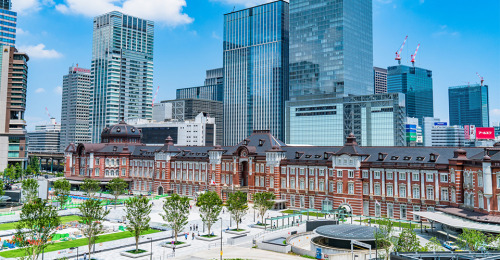

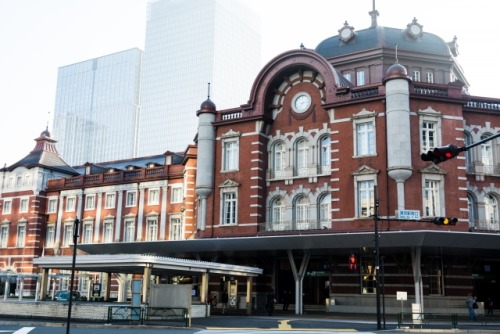

Sean bienvenidos japonistasarqueológicos, a una nueva entrega en la cual hablaremos de la famosa estación de Tokyo, uno de los pocos edificios que ha sobrevivido al paso del tiempo, ya que tras la operación doolittle y el gran terremoto de Tokio de 1923, Tokio ha sido muy remodelada, dicho esto pónganse cómodos que empezamos. - En 1908, comenzó su construcción en lo que respecta a la estación central, en 1914 empezó a funcionar, en la era Taisho 1915 Se inauguró el hotel de la estación de Tokio. En el año 1923 tiene lugar el Gran Terremoto de Kanto y el edificio de la estación no está particularmente dañado, se pudo reparar, pero la ciudad de Tokyo fue remodelada por completo y en 2007 realizaron trabajos de restauración, terminado en 2012. Hay que recordar que ha sufrido muchas restauraciones, ya que la de 1945 fue la más letal de todas. - Espero que os haya gustado y nos vemos en próximas publicaciones ¿Conocían este edificio y su historia? Que pasen una buena semana. - 今回は、有名な東京駅についてお話します。ドゥーリトル作戦や1923年の東京大震災の後、東京は大きく改造されましたが、その中でも数少ない時代の流れに耐えた建物の一つです。 - 1908年、中央駅の建設が始まり、1914年に開業、大正時代の1915年には東京ステーションホテルがオープンしました。1923年に関東大震災が起こり、駅舎は特に被害はなく、修復されましたが、東京の街は完全に改造され、2007年に修復工事が行われ、2012年に完成しました。1945年の震災が最も致命的であったため、何度も修復が行われたことを忘れてはならない。 - この建物とその歴史を知っていましたか?それでは、今週もよろしくお願いします。 - Welcome to a new installment in which we will talk about the famous Tokyo Station, one of the few buildings that has survived the passage of time, since after operation doolittle and the great Tokyo earthquake of 1923, Tokyo has been greatly remodelled, that said, make yourselves comfortable and let's get started. - In 1908, construction began on the Central Station, which became operational in 1914, and in the Taisho era 1915, the Tokyo Station Hotel was opened. In 1923 the Great Kanto Earthquake took place and the station building was not particularly damaged, it was repaired, but the city of Tokyo was completely remodelled and in 2007 restoration work was carried out, completed in 2012. It should be remembered that it has undergone many restorations, as the one in 1945 was the most lethal of them all. - I hope you liked it and see you in future posts. Did you know this building and its history? Have a nice week.




Sean bienvenidos, japonistasarqueologicos, al tercer capítulo del Japón prehistórico y seguir recorriendo sus lugares mitológicos y mágicos, una vez dicho esto póngase comandos que empezamos. - Para continuar nuestro viaje, más vale tarde que nunca, pero despacio y con buena letra. Nos trasladamos al yacimiento arqueológico de Sannai Maruyama en la prefectura de Aomori, localizada en la región de Tōhoku. - La estructura, de madera, data del periodo jomon, es una estructura que funcionó como un gran calendario, ya que algo común que tienen todas las culturas en el mundo es adorar a las estrellas en lo que respecta a la prehistoria. El yacimiento data del 3900 a.c localizado a lo largo del río Okidate en la punta de una suave colina que se extiende desde las montañas Hakkoda. - En la década de 1992, tuvieron lugar las excavaciones que han desenterrado los restos de viviendas en pozos, tumbas de adultos, niños y los pozos de almacenamiento, entre otros rastros de la vida cotidiana. Además de una hay una gran cantidad de herramientas de loza de piedra. Se han excavado una gran variedad de huesos de pescado y de animales que indican hábitos alimenticios de aquella gente, también fueron encontrados frutos secos: como castañas y nueces. Además, se han desenterrado muchas reliquias orgánicas, como productos de madera, herramientas de hueso, canastas tejidas, así como artículos comerciales como jade, obsidiana de áreas remotas y asfalto. Hay una teoría: en Iwate se crean estructuras similares para realizar la danza de los ciervos ¿Qué opinan al respecto? _ Espero que os haya gustado y nos vemos en próximas publicaciones mis amantes del mundo japonés, que pasen una buena semana. - 考古学者の日本主義者の皆さん、先史時代の日本の第 3 章へようこそ、神話と魔法の場所を旅し続けてください。 - 旅を続けるには、遅刻しないよりはマシですが、ゆっくりと上手な字で。 東北地方にある青森県の三内丸山遺跡へ移動します。 - この木造建造物は縄文時代にまで遡り、先史時代から世界のどの文化にも共通して星を崇拝しており、偉大な暦として機能していた建造物です。 この遺跡は、八甲田山系から続くなだらかな丘陵の先端、沖館川沿いに位置し、紀元前 3900 年に遡ります。 - 1992 年代に発掘調査が行われ、井戸内の住居跡、大人、子供の墓、貯蔵穴、その他の日常生活の痕跡が発掘されました。 1 つ以外にも多数の石器の道具があります。 当時の人々の食生活を示す魚や動物の骨が多数出土しており、栗やクルミなどの木の実も出土しています。 さらに、木製品、骨道具、編んだかごなどの有機遺物や、翡翠、辺境の黒曜石、アスファルトなどの交易品も発掘されています。 岩手でも鹿踊りをするために同じような建物が作られているという説がありますが、どう思いますか? _ 日本の世界を愛する皆さん、良い一週間をお過ごしください。 - Welcome, archaeological Japanists, to the third chapter of prehistoric Japan and continue touring its mythological and magical places. Having said that, put yourself in command and let's begin. - To continue our journey, better late than never, but slowly and with good handwriting. We move to the Sannai Maruyama archaeological site in Aomori prefecture, located in the Tōhoku region. - The wooden structure dates back to the Jomon period, it is a structure that functioned as a great calendar, since something common that all cultures in the world have is worshiping the stars in regards to prehistory. The site dates back to 3900 BC located along the Okidate River at the tip of a gentle hill that extends from the Hakkoda Mountains. - In the 1992s, excavations took place that unearthed the remains of dwellings in wells, graves of adults, children and storage pits, among other traces of daily life. In addition to one there are a large number of stoneware tools. A wide variety of fish and animal bones have been excavated that indicate the eating habits of those people. Nuts such as chestnuts and walnuts were also found. In addition, many organic relics have been unearthed, such as wooden products, bone tools, woven baskets, as well as trade items such as jade, obsidian from remote areas, and asphalt. There is a theory: in Iwate similar structures are created to perform the deer dance. What do you think about it? _ I hope you liked it and see you in future posts my lovers of the Japanese world, have a good week.

日本の考古学と科学思想の歴史。 第3章 : 日本の考古学者の皆さん、哲学的観点から見た新しい日本考古学へようこそ。 - 1868年当時、日本にはヨーロッパやアメリカで見られるような科学的根拠はありませんでした。日本がその精神やその一部を開放したのは、1868年から1869年の戊辰戦争後になります。米国のような国は日本の科学をモデルにするだろうから、非常に保守的だった。 日本で骨董品への関心が芽生えたのはいつ頃ですか? 江戸時代にはすでに骨董品への関心があったことが知られており、はるか昔にヨーロッパでも同様のことが起こりました。 日本の発掘の始まりは19世紀のほぼ終わりに始まり、数年前に日本でいくつかのローマ硬貨が発見されました。どうやら日本の封建領主は古遺物を収集するのが好きでした。おそらくそれらは中国のどこかの港から海岸に到着しました。日本語。 - 過去を知りたいという欲求は、どの大陸に属していても、すべての人類に共通のものであり、問題の時代についても同じことが言えます。 ヨーロッパやアメリカの様々な勢力が日本に到来したとき、彼らはその住民に影響を与えました。そのため、日本人によって日本考古学の父と考えられているエドワード・モースを、他の登場人物の中でも特に取り上げています。 19 世紀には、アメリカ哲学の最も偉大な学派の 1 つであるテイラー主義があり、これは台湾で考古学的発掘を行い、中国および韓国との関係を確立する日本の考古学の最も偉大な人物の 1 人である鳥居龍蔵に影響を与えることになります。 - 気に入っていただければ幸いです。今後の投稿でお会いしましょう。良い一週間をお過ごしください。 - HISTORY OF JAPANESE ARCHEOLOGY AND SCIENTIFIC THOUGHT. Chapter 3 : Welcome, Japanesearchaeologicalists, to a new installment of Japanese archaeology, seen from a philosophical point of view. Having said that, get comfortable and let's begin. - In 1868 Japan did not have a scientific base per se as we can see in Europe or the United States, it will be after the Boshin War of 1868-69 when Japan opened its mentality or part of it, since a good part of the population was very conservative because Countries like the United States would model Japanese sciences. When did interest in antiques arise in Japan? It is known that in the Edo period there was already interest in antiquities, something similar happened in Europe a long time ago. The beginning of the Japanese excavations began almost at the end of the 19th century, a few years ago some Roman coins were discovered in Japan, apparently a feudal lord in Japan liked to collect antiquities, they probably arrived from some port in China to the coasts Japanese. - The desire to know the past is something that all human beings share, no matter what continent you belong to and the same can be said about the era in question. When the different powers from Europe and the United States arrived in Japan, they influenced its inhabitants, thus we have, among other characters, Edward Morse, considered by the Japanese, the father of Japanese archaeology. During the 19th century we have one of the greatest schools of American philosophy, Taylorism, which will influence one of the greatest figures of Japanese archeology Torii Ryūzō who will carry out archaeological excavations in Taiwan, establishing relations with China and Korea. - I hope you liked it and see you in future posts, have a good week.